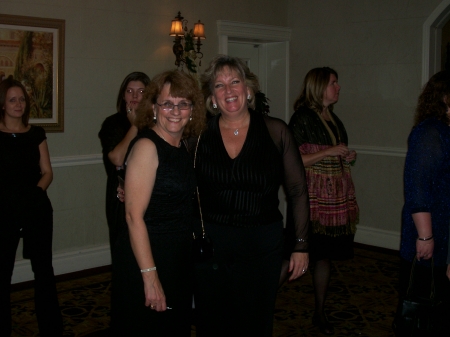Nancy E Craig
age ~91
from Summerfield, FL
- Also known as:
-
- Nancy Ecraig
- Phone and address:
-
12572 SE 91St Terrace Rd, Summerfield, FL 34491
3522451820
Nancy Craig Phones & Addresses
- 12572 SE 91St Terrace Rd, Summerfield, FL 34491 • 3522451820
- Baltimore, MD
- Newberry, FL
- Kittanning, PA
Wikipedia References

Nancy Craig
Lawyers & Attorneys

Nancy J Craig - Lawyer
view sourceAddress:
2024158675 (Office)
Licenses:
Dist. of Columbia - Active 2008
License Records
Nancy Lynn Craig
License #:
25187 - Expired
Category:
Cosmetology
Issued Date:
Nov 1, 1971
Effective Date:
Mar 17, 2017
Expiration Date:
Dec 31, 2016
Type:
Cosmetologist
Nancy Lynn Craig
License #:
1229 - Expired
Category:
Cosmetology
Issued Date:
Apr 25, 2011
Effective Date:
Mar 17, 2017
Expiration Date:
Dec 31, 2016
Type:
Cosmetology Instructor
Nancy Craig
License #:
1121 - Active
Category:
Pharmacy
Issued Date:
May 1, 2008
Effective Date:
May 1, 2008
Expiration Date:
Jan 1, 2019
Type:
Pharmacy Technician
Us Patents
-
Gain Of Function Mutations In Atp-Dependent Transposition Proteins
view source -
US Patent:20020188105, Dec 12, 2002
-
Filed:Dec 19, 2001
-
Appl. No.:10/024809
-
Inventors:Nancy Craig - Baltimore MD, US
-
Assignee:Johns Hopkins University School of Medicine
-
International Classification:C12N009/16
C12N015/74
C12P021/02
C07K014/705 -
US Classification:530/350000, 435/196000, 435/320100, 435/473000, 435/069100
-
Abstract:The invention is specifically directed to efficient, random, simple insertion of a transposon or derivative transposable element into DNA in vivo or in vitro. The invention is particularly directed to mutations in ATP-utilizing regulatory transposition proteins that permit insertion with less target-site specificity than wild-type. The invention encompasses gain-of-function mutations in TnsC, an ATP-utilizing regulatory transposition protein that activates the bacterial transposon Tn7. Such mutations enable the insertion of a Tn7 transposon or derivative transposable element in a non-specific manner into a given DNA segment. Insertion can be effected in plasmid and cosmid libraries, cDNA libraries, PCR products, bacterial artificial chromosomes, yeast artificial chromosomes, mammalian artificial chromosomes, genomic DNAs, and the like. Such insertion is useful in DNA sequencing methods, for genetic analysis by insertional mutagenesis, and alteration of gene expression by insertion of a given genetic sequence.
-
Piggybac Transposon Variants And Methods Of Use
view source -
US Patent:20110311506, Dec 22, 2011
-
Filed:Feb 25, 2010
-
Appl. No.:13/203393
-
Inventors:Nancy Lynn Craig - Baltimore MD, US
-
Assignee:THE JOHNS HOPKINS UNIVERSITY - Baltimore MD
-
International Classification:A61K 38/45
C12N 15/63
C12N 5/10
C07H 21/04
C12N 9/12 -
US Classification:424 945, 536 231, 435194, 435325, 435455
-
Abstract:The present invention provides hyperactive piggyBac transposons, in particular hyperactive piggyBac transposons from (cabbage looper moth) that transpose at a higher frequency than wildtype. The invention also features integration defective piggyBac transposons. The piggyBac transposons and transposases can be used in gene transfer systems for stably introducing nucleic acids into the DNA of a cell. The gene transfer system can be used in methods, for example, but not limited to, gene therapy, insertional mutagenesis, or gene discovery.
-
Piggybac Transposon Variants And Methods Of Use
view source -
US Patent:20140065124, Mar 6, 2014
-
Filed:Sep 26, 2013
-
Appl. No.:14/038132
-
Inventors:Nancy Lynn Craig - Baltimore MD, US
-
Assignee:THE JOHNS HOPKINS UNIVERSITY - Baltimore MD
-
International Classification:C12N 15/85
-
US Classification:424 945, 536 231, 435194, 435325, 435455
-
Abstract:The present invention provides hyperactive piggyBac transposons, in particular hyperactive piggyBac transposons from (cabbage looper moth) that transpose at a higher frequency than wildtype. The invention also features integration defective piggyBac transposons. The piggyBac transposons and transposases can be used in gene transfer systems for stably introducing nucleic acids into the DNA of a cell. The gene transfer system can be used in methods, for example, but not limited to, gene therapy, insertional mutagenesis, or gene discovery.
-
Gain Of Function Mutations In Atp-Dependent Transposition Proteins
view source -
US Patent:6420524, Jul 16, 2002
-
Filed:Feb 20, 1998
-
Appl. No.:09/027169
-
Inventors:Nancy L. Craig - Baltimore MD
-
Assignee:Johns Hopkins University School of Medicine - Baltimore MD
-
International Classification:C07K 100
-
US Classification:530350, 536 232
-
Abstract:The invention is specifically directed to efficient, random, simple insertion of a transposon or derivative transposable element into DNA in vivo or in vitro. The invention is particularly directed to mutations in ATP-utilizing regulatory transposition proteins that permit insertion with less target-site specificity than wild-type. The invention encompasses gain-of-function mutations in TnsC, an ATP-utilizing regulatory transposition protein that activates the bacterial transposon Tn. Such mutations enable the insertion of a Tn transposon or derivative transposable element in a non-specific manner into a given DNA segment. Insertion can be effected in plasmid and cosmid libraries, cDNA libraries, PCR products, bacterial artificial chromosomes, yeast artificial chromosomes, mammalian artificial chromosomes, genomic DNAs, and the like. Such insertion is useful in DNA sequencing methods, for genetic analysis by insertional mutagenesis, and alteration of gene expression by insertion of a given genetic sequence.
-
Trichoplusia Ni Piggybac Transposases With Reduced Integration Activity
view source -
US Patent:20180072999, Mar 15, 2018
-
Filed:Sep 7, 2017
-
Appl. No.:15/698060
-
Inventors:- Baltimore MD, US
Nancy L. Craig - Baltimore MD, US -
Assignee:The Johns Hopkins University - Baltimore MD
-
International Classification:C12N 9/12
C12N 9/22
C12N 15/85
C12N 15/81
C12N 15/79
C12N 15/90 -
Abstract:The present invention is directed to nucleic acid and amino acid sequences of a novel piggyBac transposase enzymes created by modifying the transposase of Trichoplusia ni. The piggyBac transposases of the present invention are functionally active or hyperactive for excision and have decreased integration activity compared to wild type Trichoplusia ni piggyBac transposase enzyme. These transposases are ideal for use in methods of transforming cells and organisms. In particular embodiments, the present invention provides methods of transient integration and expression of transgenes.
-
Piggybac Transposon Variants And Methods Of Use
view source -
US Patent:20170226531, Aug 10, 2017
-
Filed:Apr 25, 2017
-
Appl. No.:15/496286
-
Inventors:- Baltimore MD, US
Nancy L. Craig - Baltimore MD, US -
International Classification:C12N 15/90
A61K 38/45
C12N 9/12 -
Abstract:The present invention provides hyperactive piggyBac transposons, in particular hyperactive piggyBac transposons from (cabbage looper moth) that transpose at a higher frequency than wildtype. The invention also features integration defective piggyBac transposons. The piggyBac transposons and transposases can be used in gene transfer systems for stably introducing nucleic acids into the DNA of a cell. The gene transfer system can be used in methods, for example, but not limited to, gene therapy, insertional mutagenesis, or gene discovery.
-
Trichoplusia Ni Piggybac Transposases With Reduced Integration Activity
view source -
US Patent:20140287513, Sep 25, 2014
-
Filed:Jul 16, 2012
-
Appl. No.:14/233024
-
Inventors:Nancy L. Craig - Baltimore MD, US
-
Assignee:HOWARD HUGUES MEDICAL INSTITUTE - Chevy Chase MD
THE JOHNS HOPKINS UNIVERSITY - Baltimore MD -
International Classification:C12N 9/12
C12N 15/90 -
US Classification:435462, 435194
-
Abstract:The present invention is directed to nucleic acid and amino acid sequences of a novel piggyBac transposase enzymes created by modifying the transposase of The piggyBac transposases of the present invention are functionally active or hyperactive for excision and have decreased integration activity compared to wild type piggyBac transposase enzyme. These transposases are ideal for use in methods of transforming cells and organisms. In particular embodiments, the present invention provides methods of transient integration and expression of transgenes.
Isbn (Books And Publications)

Youtube
Myspace

Nancy Craig
view sourceFlickr
Plaxo

Nancy Craig
view sourceSr. VP/CFO at hunt properties

Nancy Craig
view sourceAtchley Enterprises

Nancy Craig
view sourceVerizon
Classmates

Nancy Quackenbush (Craig)
view sourceSchools:
Jefferson Junior High School Bath SC 1974-1978
Community:
Mary Saurman, Lyndal Lassiter, Patricia Reynolds, Clayton Thompson, Suzette Herndon

Nancy McDonald (Craig)
view sourceSchools:
Bracebridge & Muskoka La High School Bracebridge Morocco 1969-1973
Community:
Byron Shutt, Don Boniface, Gloria Page, Terri Patterson

Nancy Geist (Craig)
view sourceSchools:
DuBois Area High School Du Bois PA 1966-1970
Biography:
I'm married to Tom with one daughter named Lori. Had worked as a nurse but have no...

Nancy Christman (Craig)
view sourceSchools:
Bellevue Elementary School Atchison KS 1962-1965, Franklin Elementary School Atchison KS 1965-1966, Washington Elementary School Atchison KS 1966-1968
Community:
Jeff Demoss, Sharon Koehnlein, Theresa Chew
Biography:
Life
I have married to Willie Christman for 28 years. I have a son and a daughter. ...

Nancy Carr (Craig)
view sourceSchools:
Arlington High School 722 Indianapolis IN 1965-1969
Community:
Jerry Glass

Nancy Craig (Ferkinhoff)
view sourceSchools:
Immaculate Conception Academy High School Oldenburg IN 1987-1991
Community:
Christina Riehle, Kathleen Logan, Pat Browne

Nancy Craig (Martin)
view sourceSchools:
Central Elementary School Plainfield IN 1942-1946, Clayton High School Clayton IN 1952-1955
Community:
Sharon Hove, Terry Jones

Nancy Reaves (Craig)
view sourceSchools:
Columbus High School Columbus GA 1958-1962
Community:
Pearl Sweet, Rick Mccollum
Googleplus

Nancy Craig

Nancy Craig

Nancy Craig

Nancy Craig

Nancy Craig

Nancy Craig

Nancy Craig

Nancy Craig

Nancy Plemmons Craig
view source
Nancy Fridley Craig
view source
Nancy Plummer Craig
view source
Nancy Bobbitt Craig
view source
Nancy Craig McGrath
view source
Nancy Craig
view source
Nancy Craig
view source
Nancy Craig Smith
view sourceGet Report for Nancy E Craig from Summerfield, FL, age ~91


















